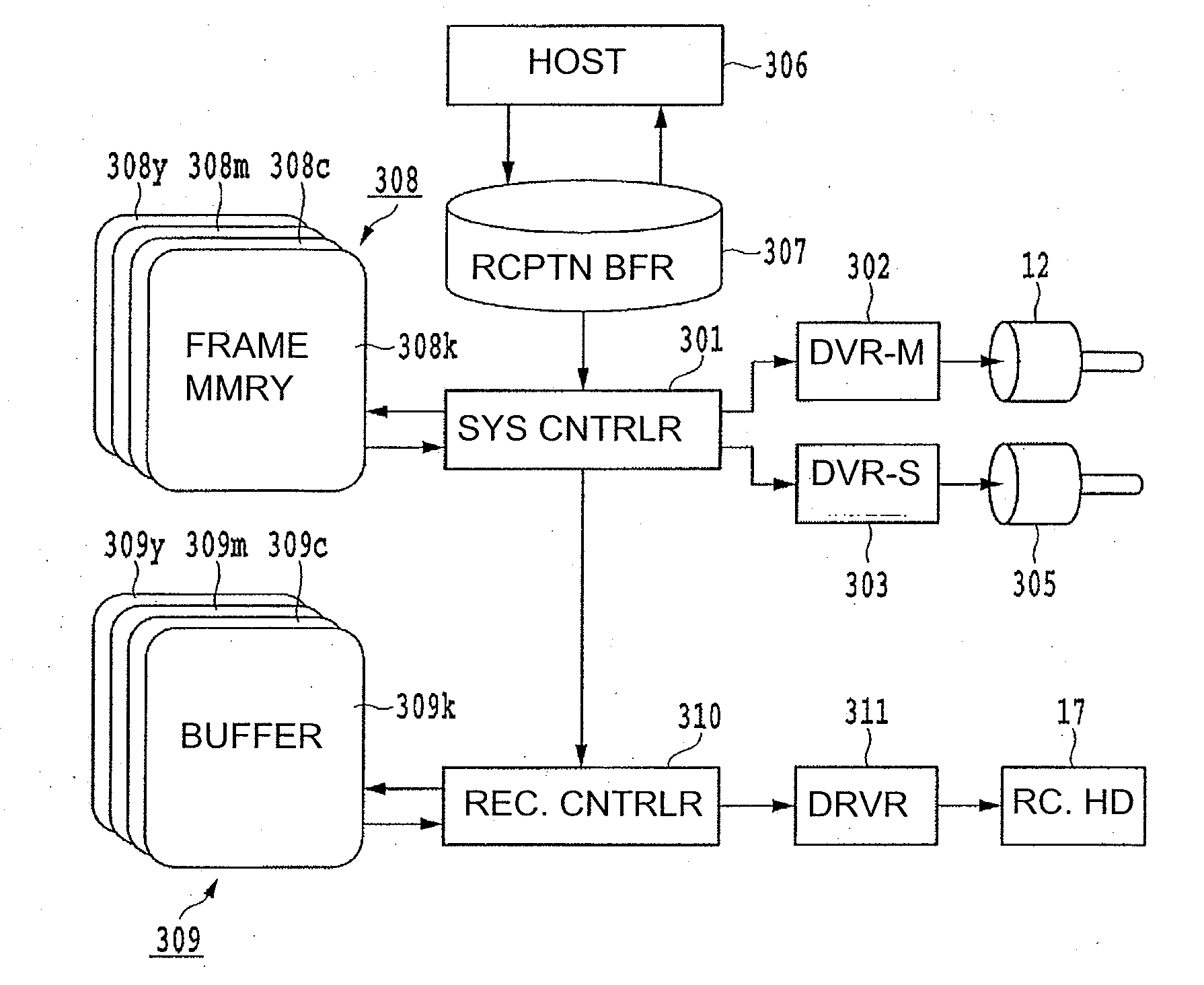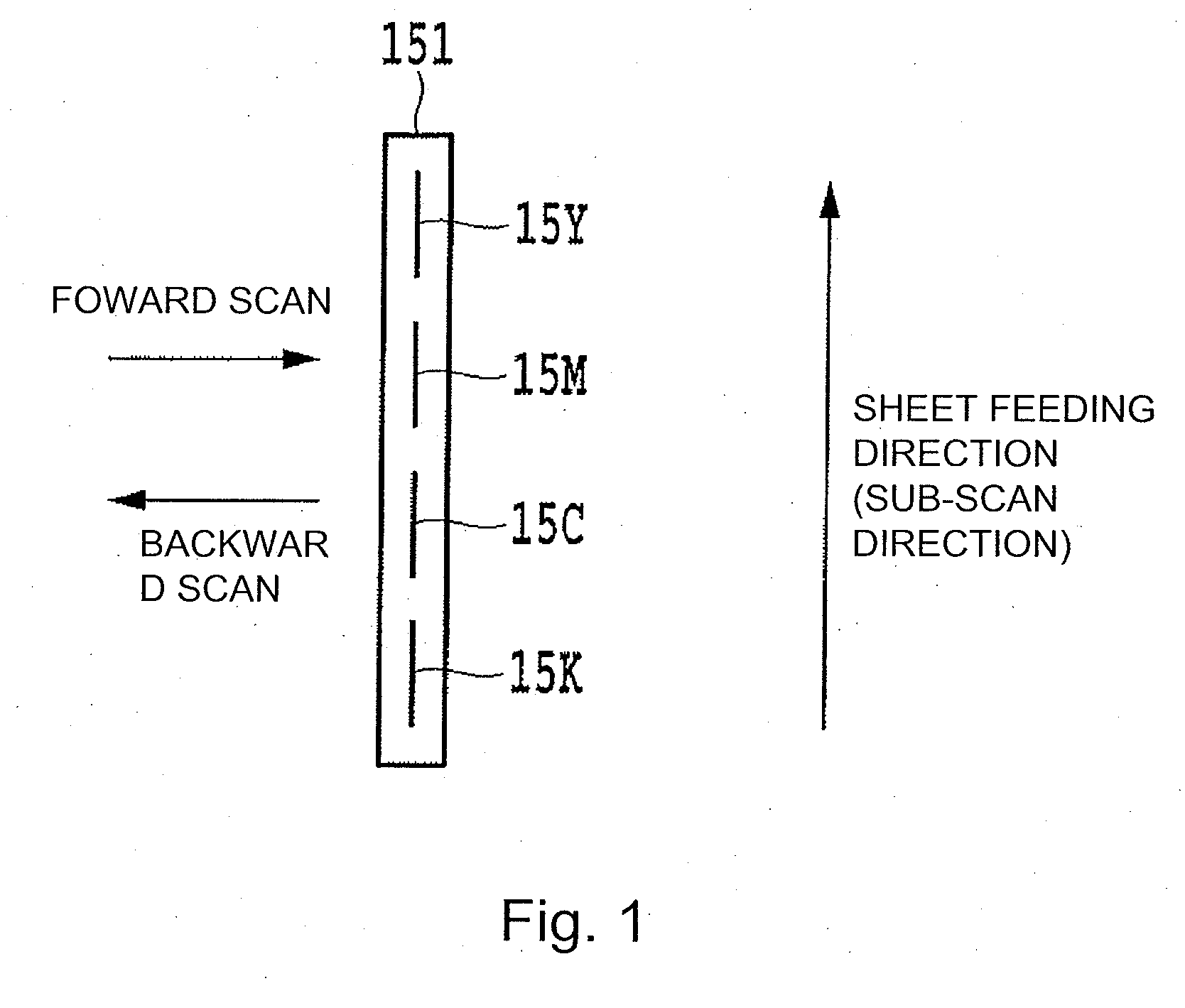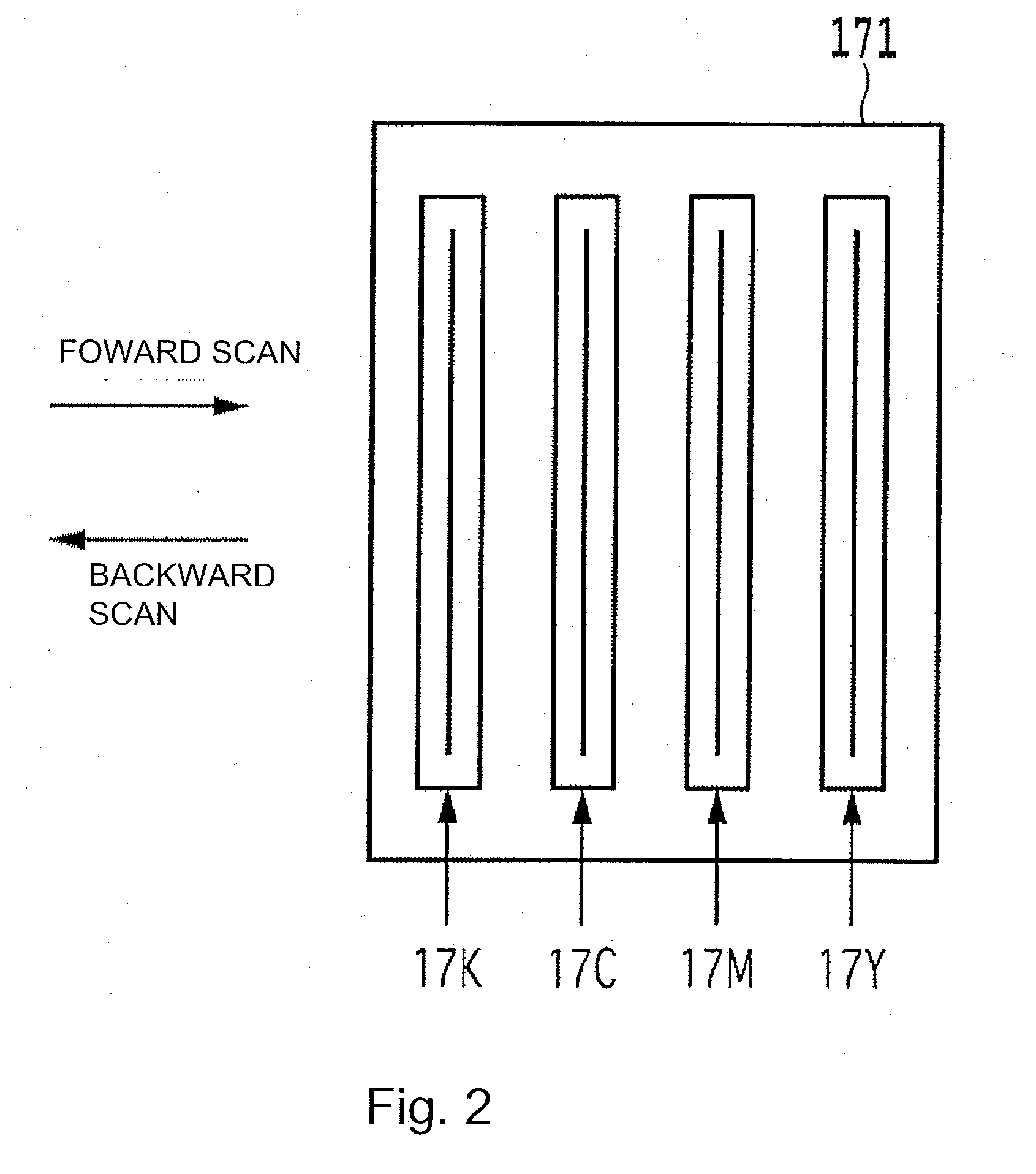Ink jet recording apparatus and ink jet recording method
- Summary
- Abstract
- Description
- Claims
- Application Information
AI Technical Summary
Benefits of technology
Problems solved by technology
Method used
Image
Examples
Example
[0120]Also in this embodiment, the same inks as those used in the first embodiment are used by the same ink jet recording apparatus as the one used in the first embodiment and shown in FIGS. 6-8 are used. Further, the image processing steps carried out by the host apparatus in this embodiment are roughly the same as those in the first embodiment, which were described using the flowcharts in FIGS. 9 and 10. However, in this embodiment, the 4-bit data conversion process 108 (step) is not carried out in the host apparatus. Instead, the density data 107 made up of the 8-bit data obtained for each color by the color separation process, and the mask separation parameter MP, are transmitted to the recording apparatus.
[0121]Further, in this embodiment, the recording apparatus does not prepare the binary mask patterns such as those in the first embodiment. Instead, it prepares mask patterns (recording permission ratio determining patterns) which determine only the recording permission ratio ...
Example
EMBODIMENT 3
[0136]Also in this embodiment, the same ink jet recording apparatus shown in FIGS. 6-8, and the same ink, as those used in the above described embodiments, are used. As for the series of image processing steps used in this embodiment, it is roughly the same as that used in the second embodiment. In this embodiment, however, instead of the mask parameter MP in FIG. 10, the intermediary mask selection parameter MP′1104 in FIG. 10, that is, the mask selection parameter prior to the binarization process, is transferred to the recording apparatus. Thus, the recording apparatus in this embodiment receives the density datum 107, which is made up of eight bits per color of unit pixel, and the intermediary mask selection parameter MP′1104, which is made up of five bits, being there capable of having 32 different values, from the host apparatus.
[0137]FIG. 20 is a drawing for describing 32 different mask patterns 0-31 prepared in this embodiment. The mask pattern 0 in the drawing i...
Example
EMBODIMENT 4
[0143]In order to prevent the formation of an image which suffers from the nonuniformity in density, which is attributable to positional registration errors, the second and third embodiments, which adopted the structural arrangement disclosed in Japanese Laid-open Patent Application 2000-103088, binarized the nonbinary (multi-value) density datum after dividing the multiple data, which correspond one for one to multiple recording passes (scans) (which correspond to multiple nozzle groups; multiple regions of nozzle column). However, in case where the binarization process is carried out after the division of the density data into multiple data, there is no complementary positional relationship among the dots recorded during each recording scan, and therefore, there will be unit pixels into which no dot is recorded even if an image to be recorded is a 100% image, and / or unit pixels into which two or more dots are recorded in layers. Japanese Laid-open Patent Application 20...
PUM
 Login to View More
Login to View More Abstract
Description
Claims
Application Information
 Login to View More
Login to View More - R&D
- Intellectual Property
- Life Sciences
- Materials
- Tech Scout
- Unparalleled Data Quality
- Higher Quality Content
- 60% Fewer Hallucinations
Browse by: Latest US Patents, China's latest patents, Technical Efficacy Thesaurus, Application Domain, Technology Topic, Popular Technical Reports.
© 2025 PatSnap. All rights reserved.Legal|Privacy policy|Modern Slavery Act Transparency Statement|Sitemap|About US| Contact US: help@patsnap.com



